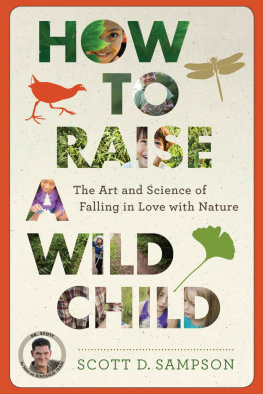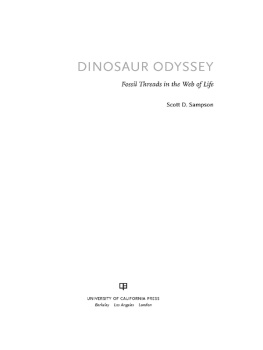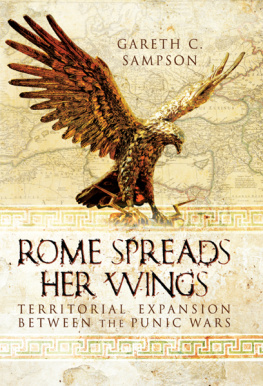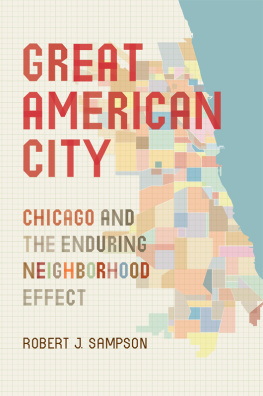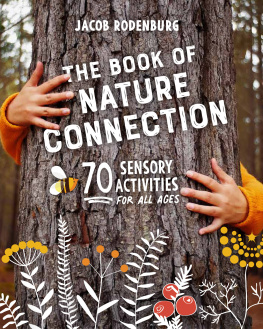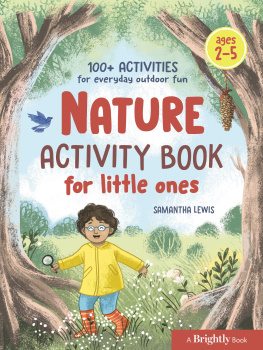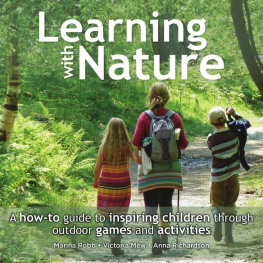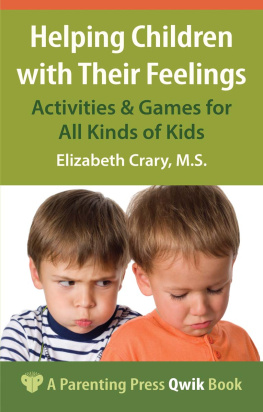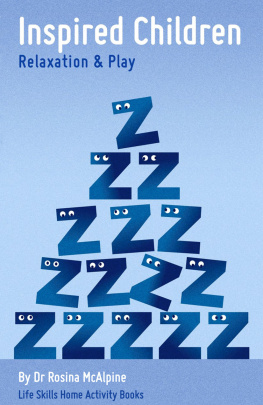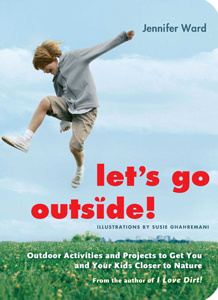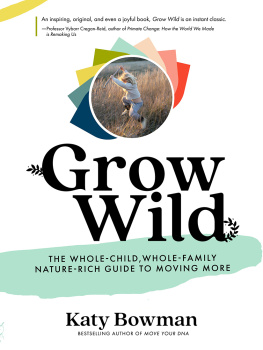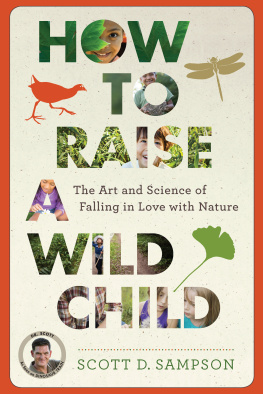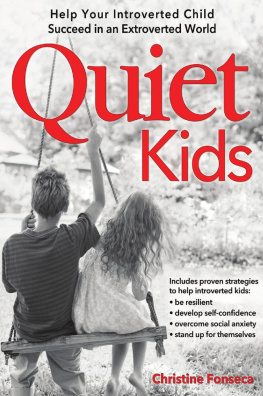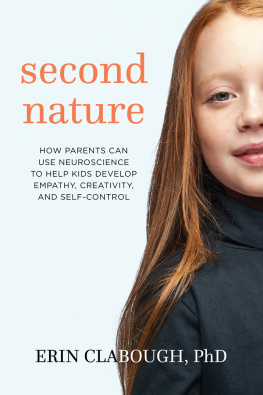
Table of Contents
Copyright 2015 by Scott D. Sampson
All rights reserved
For information about permission to reproduce selections from this book, write to Permissions, Houghton Mifflin Harcourt Publishing Company, 215 Park Avenue South, New York, New York 10003.
www.hmhco.com
Library of Congress Cataloging-in-Publication Data is available.
ISBN 978-0-544-27932-2
NOTE: Readers and the children they mentor should give due regard to safety in all interactions with nature.
Ich lebe mein Leben... / I live my life in widening, from Rilkes Book of Hours: Love Poems to God by Rainer Maria Rilke, translated by Anita Barrows and Joanna Macy, translation copyright 1996 by Anita Barrows and Joanna Macy. Used by permission of Riverhead Books, an imprint of Penguin Group (USA) LLC.
e ISBN 978-0-544-27919-3
v1.0315
In wildness is the preservation of the world.
H ENRY D AVID T HOREAU
For my mother, Catherine June Sampson,
nature mentor extraordinaire,
and
for my sister, Kerry Dawn Sharpe,
who taught me how to live with grace and grit.
I miss you both terribly.
Preface
LIKE MANY CHILDREN, I developed a passion for dinosaurs as a kid. Without exaggeration, paleontology was one of the first words I learned to spell. By the tender age of four, I had memorized dozens of multisyllabic names of prehistoric creatures. I dug for fossils in the backyard (unsuccessfully) and came home from family camping trips with assortments of rocks (and occasional fossils), most of which were banished to the backyard. A black-and-white photo taken when I was four years old shows me hugging a cement Stegosaurustrue love.
Unlike most children, I never lost my passion for dinosaurs. Some say I never really grew up. After contemplating several alternative careers, I eventually chose to pursue a doctorate in zoology at the University of Toronto. My dissertation involved naming and describing two previously unknown horned dinosaurs discovered in Montana.
In 1999, I accepted a dual position at the University of Utah in Salt Lake City as a paleontology curator at the Utah Museum of Natural History (now the Natural History Museum of Utah) and an assistant professor in the Department of Geology and Geophysics. It was a dream job for a dino-guy like me, with museum resources for fieldwork and fossil preparation, access to graduate students, and plenty of amazing fossils to be discovered within a days drive. I also took advantage of opportunities to hunt dinosaurs (or at least their fossilized bones) in far-off lands, enjoying many seasons in Africa and elsewhere. It seemed I was set for life.
But in 2007, now a tenured professor and museum chief curator, I gave it all up. Well, most of it. I kept fossil hunting in Utah, but my wife Toni and I decided to move to northern California, where I devoted the bulk of my energies to public science education and fostering nature connection. Many colleagues thought I was nuts, and so did I for a while. Why make such a drastic change?
It came down to a pair of compelling insights. First, the current disconnect between kids and nature threatens the health of children. A childhood lived almost entirely indoors immersed in technology is an impoverished childhood, with numerous negative impacts on growthphysical, mental, and emotional. Second, the current trend toward denaturing childhood also threatens the places we live and perhaps even the future of humanity. We likely have about one generation (some say less, some say a little more) to make profound changes and set ourselves on a sustainable course. After thatwell, nature, as they say, bats last.
If sustainability depends on transforming the human relationship with nature, the present-day gap between kids and nature emerges as one of the greatest and most overlooked crises of our time, threatening people and countless other species. Helping children fall in love with nature deserves to be a top national priority, on par with reducing greenhouse gas emissions and preserving species and wild places. Having spent much of my adult life communicating science to nonscientists, including kids, I felt the need to contribute more directly to this urgent effort.
Since then, my work has taken several forms, including writing, speaking, and various media projects. The most high-profile example has been Dinosaur Train, a PBS KIDS television series produced by the Jim Henson Company that, as of this writing, airs daily across the United States and in many other countries around the world. I serve as the shows science advisor and host, consulting on scripts and helping to craft the stories for the animated characters, including Buddy, a young T. rex, and Tiny, a kid Pteranodon (flying reptile). At the end of each episode, I appear on camera to talk about the science behind the stories, making connections between the prehistoric world of dinosaurs and our present-day world. My enthusiastic tagline at the end of every show is, Get outside, get into nature, and make your own discoveries!
Dinosaur Train has been a roaring success, as well as a lot of fun, reaching millions of children and parents. Through my writing and speaking events, the show has also afforded me terrific opportunities to promote the cause of connecting children with nature. Yet a few years ago, a fundamental question hit me like a T. rex thighbone to the gut: Exactly how do kids connect with nature, and how does this process change as they grow up? I had some ideas, but really didnt know the answer.
Surely, I presumed, with so many organizations engaged in nature connection, there must be a bevy of books on the topic. A rigorous search revealed no shortage of offerings on outdoor activities for kids, from birding to gardening, and plenty of volumes devoted to environmental education. Yet with few exceptions, these books did not delve directly into nature connection, let alone how this process changes with the age of the child. No one would argue that toddlers and teenagers engage with nature in different ways, but exactly what are those ways? Digging further, I found a stream of academic papers, most written in the past couple of decades, addressing this very issue. Yet until now these results have not been summarized in a single volume for a general audience.
Ultimately, the search for answers took me far beyond the scientific literature, into backyards, classrooms, school gardens, urban parks, nature centers, museums, and out into the wilderness. Ive studied nature mentoring, learned bird language with my daughter Jade, and spent time with kids in wild places. Along the way, I was embarrassed to discover that my own sense of nature connection wasit has to be saidpitiful. So, while writing this book, I sought to deepen this connection, both for Jade and for myself. Ultimately, all this research has led me to a series of conclusions about how nature connection actually works, and how the process changes as children grow. The implications of these findings get to the very heart of parenting and teaching, and of childhood itself. How to Raise a Wild Child is that story, aimed at everyone interested in the art and science of helping children fall in love with nature. If youre interested in becoming a nature mentor to the children in your life, this is the book for you.
In 2013, just as I began writing this volume in earnest, I moved with my family from the seaside village of Muir Beach, California, to Denver, Colorado, to take on another opportunity. The Denver Museum of Nature & Science offered me an executive position, with the potential to tackle important work on an urban scale. Now well into my second year, Im excited to be at such a forward-thinking institution endeavoring to make a difference. And, thanks to input from numerous new colleagues and friends, the move to Denver greatly altered the content of this book.
Next page
